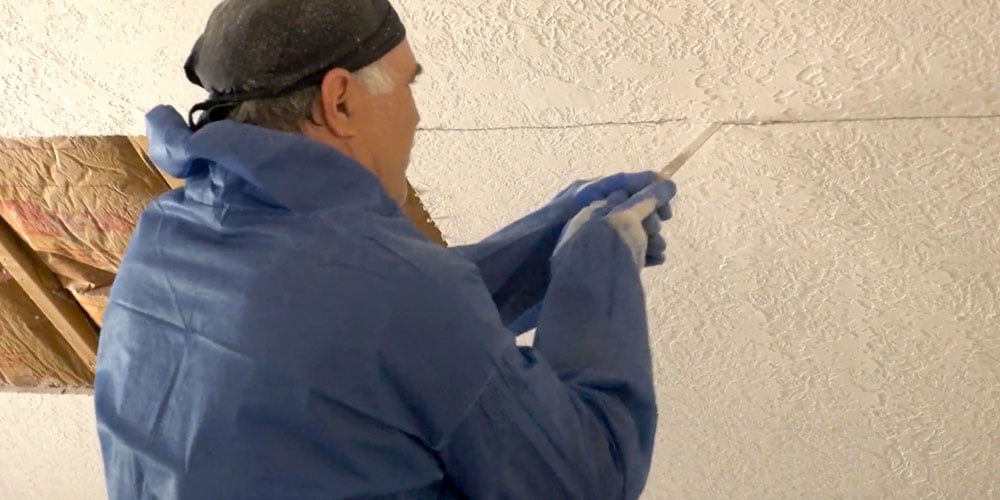Can RetroFoam Be Used to Insulate the Ceiling?
spray foam insulation | RetroFoam insulation | foam university


So, you’re thinking about ways to insulate your home and wondering, “Can RetroFoam be used to insulate your ceiling?”
You’re not alone, as this is a question we get pretty frequently. Many homeowners are turning to RetroFoam injection foam as a stress-free alternative to traditional insulation, especially when remodeling isn’t an option.
But is RetroFoam particularly suitable for ceilings? Let’s break down the facts to help you make an informed decision.
The Basics of Ceiling Insulation Foam
First things first, yes, RetroFoam can indeed be used to insulate ceilings.
This includes typical flat ceilings as well as more complex structures like cathedral or vaulted ceilings where there is no attic space. The process mirrors that used for exterior walls, making it familiar territory for those already considering RetroFoam for other parts of their home.
However, while technically feasible, the real question remains—should you use RetroFoam for your ceiling? Several factors must be considered, from the structure of your ceiling to the specific challenges that might arise.
Issue #1: The Ceiling Cavity's Depth
One major consideration is the depth of your ceiling cavity.
If the cavity is particularly thick, say 12 inches or more, the curing process of the foam might be compromised. The effectiveness of injection foam relies heavily on its ability to cure properly within the cavity it fills.
A very thick cavity could pose challenges, potentially affecting the insulation’s performance.
Issue #2: The Composition of Your Ceiling
What your ceiling is made of can also impact the suitability of foam insulation.
Common materials like drywall or plaster are straightforward—the process is quite similar to insulating a wall. However, if you have a tongue-and-groove ceiling, often found in second homes or cabins, the scenario changes.
Although RetroFoam is excellent at sealing gaps, it’s also great at finding all of the nooks and crannies. This means it could squeeze through the tongue and groove and stain beautiful wood finishes, creating cosmetic issues that can be difficult to correct.
The Advantage of Foam Insulation for Ceilings
Despite these challenges, there are compelling reasons to consider foam insulation for your ceiling.
RetroFoam offers superior air sealing capabilities, which significantly benefits energy efficiency. Filling cracks and crevices helps maintain a consistent temperature in your home, reducing the burden on your heating and cooling systems and potentially lowering your energy bills.
How to Decide if Ceiling Insulation Foam is Right for You
If you’re considering taking this route, extensive discussion with a professional contractor is crucial.
You’ll need to weigh the potential challenges against the benefits specific to your home’s architectural style and your personal comfort requirements.
Ensure clear communication about what the installation involves and discuss any concerns you might have about the process or the outcome. Setting realistic expectations is important to avoid surprises during or after the installation.
Deciding to insulate your ceiling with RetroFoam is a significant decision that should be made with as much information as possible. While there are challenges to consider, the potential benefits of enhanced comfort and energy efficiency are compelling.
You can significantly improve your home's insulation with the proper preparation and a knowledgeable contractor.
Find Your Local RetroFoam Dealer
Interested in moving forward or learning more?
The next best step is to connect with a local RetroFoam dealer who can provide tailored advice and an assessment based on your specific needs. Visit our Find a Dealer page to locate a RetroFoam expert near you and get started on improving your home’s insulation.
Related Articles
Who is Not a Good Fit for RetroFoam Home Insulation?
Can RetroFoam Be Used to Insulate the Floor?
Can Injection Foam Insulation Be Installed as a DIY Project?
About Eric Garcia
Eric brings his knowledge and training in building science, training in spray and injection foams from the manufacturers, more than eight years installing foam insulation, as well as selling and managing in the foam insulation industry. He is also BPI and Dale Carnegie certified and has taken several building science courses, including air sealing and building envelope. Eric is the Professor of Foam on our educational YouTube series Foam University. Even when Eric is off he is usually still “working” or thinking about work, but when he can get away he enjoys camping, hiking, hunting, and woodworking.


